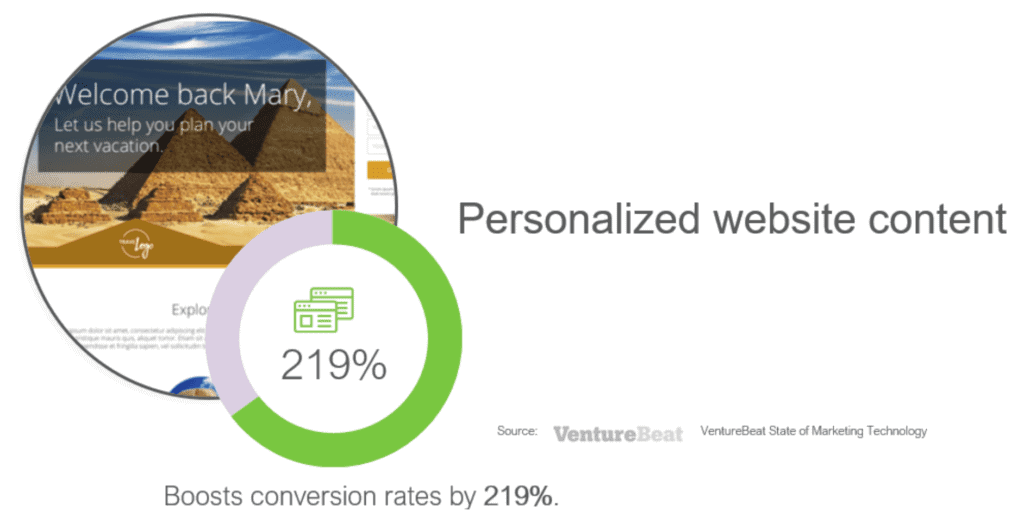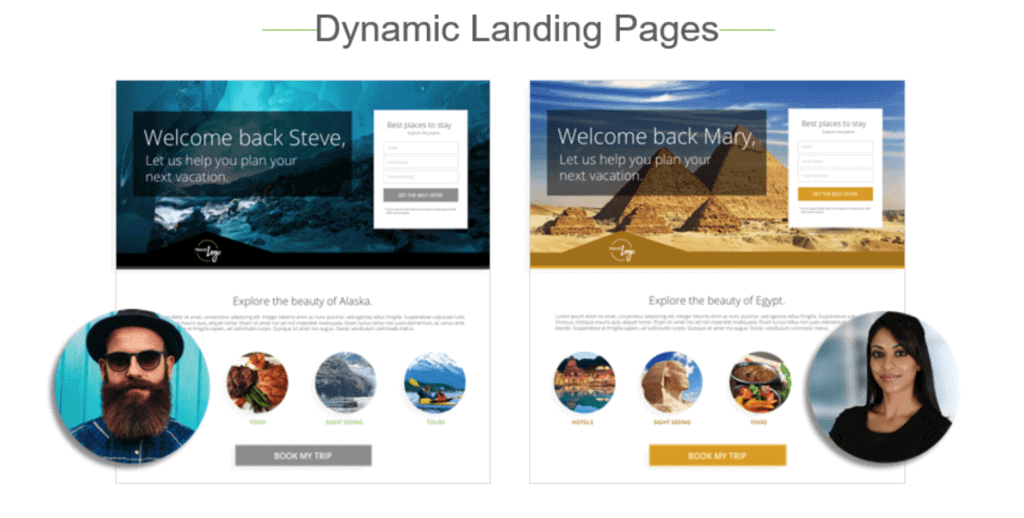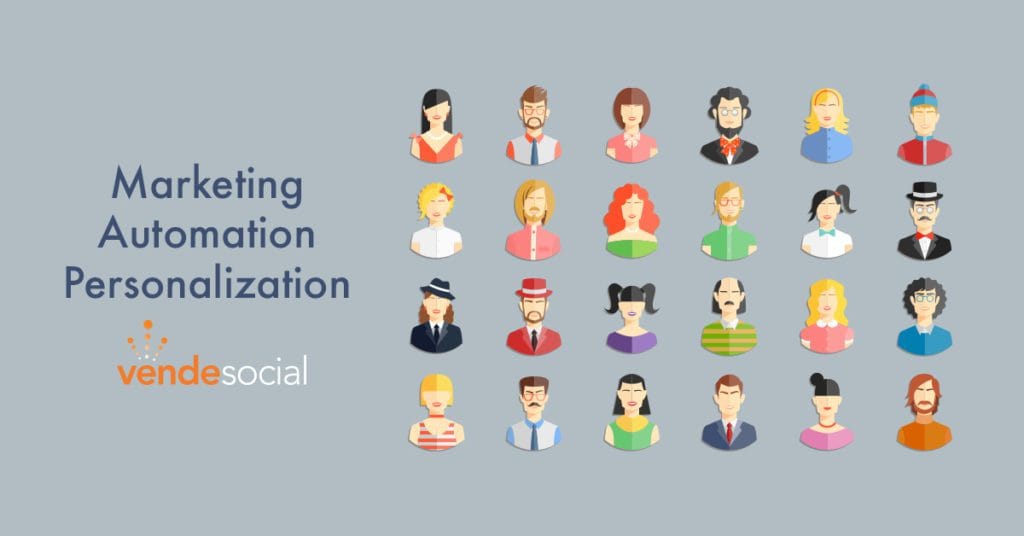If your marketing automation personalization tactics begin and end with using the first names of your subscribers in your email newsletter, you’re only scratching the tip of the iceberg. Personalization goes much deeper; it’s a far-reaching strategy that you can employ across a multichannel marketing approach. From email and social media to blogs and paid ads; personalization is a powerful tactic that puts the customer experience above everything else. Studies show that personalization increases conversion rates by more than 200%. The key to marketing automation personalization is finding the right balance, making a customer feel cared for without going past the tipping point and making them feel creepy.
The Power of Marketing Automation Personalization
While this post offers a high-level overview of marketing automation personalization, be sure to check out our Personalization & Dynamic Content Go-to-Guide for a deeper dive.

Benefits of Marketing Automation Personalization
Marketing automation has made customer personalization one of the most important tools a marketer can wield. Now, delivering a highly-personalized experience for customers is the standard for which most marketers strive. When marketers succeed, the results are impressive. Personalization through marketing automation delivers a better experience for customers and businesses. It increases visitor engagement and conversion rates.

A genuinely great personalized marketing strategy relies on data and the more data, the better. The type of data needed for personalized marketing automation goes beyond the traditional name, company, and title. Age, location, devices used, interests, and income are all valuable data insights that pave the way for intimate, personalized marketing. Website activity might be the most important type of marketing data utilized for personalization efforts. The more data you can collect, the greater the potential for personalization.
What do you do with that data once you have it? Start by laser-targeting specific audiences. Offer your audience something unique or original by building a very clear picture of who your audience is. Stand out from the crowd, and leave an impression customers will remember. Better content starts with personalized marketing automation.
Personalization gives your brand a face that people will trust and is the path to building stronger customer relationships. Carefully crafting your content, language, and offers to each segment of your audience allows your business to engage with customers on a more personal level. By communicating with customers on a personal level, through friendly, conversational emails, you can instill trust.
The effectiveness of a data-driven personalization strategy is increasing. With all of this opportunity, it can be hard to decide where to start. Thanks to the variety of data available, there are many places to use personalization throughout a strategy. When you’re getting started, data-driven personalization is most often utilized in email messaging, marketing content, and on a website home page.
There are a host of ways you can use email automation, from simple reminders to customers who opened previous marketing emails but didn’t click on your link to abandoned cart emails. Website personalization shows your audience that you’re paying attention to them and want them to be satisfied. Overall, customers seem pleased when they go to a website, and it seems to respond to their behavior.
Make Your Personalized Marketing Automation Feel Caring and Not Creepy
Of course, it’s a balance. Those touches, of reminder emails and website personalization, have to feel caring and not creepy. So how do you make sure you don’t cross that invisible line? A recent survey showed consumers say they are put off when a business knows information about them not provided directly or involving other people in their social networks.
What’s a marketer to do? Keep it simple. While more data can be a good thing, it’s important to know what data you actually need based on your marketing strategy. From there, you should only collect the data you need to reach your goal, and not hoard unnecessary data. It’s also important to be honest with your customers. They want to feel like they are in control, or, at a minimum, that they know how their information is being used.
Businesses also need to be upfront and let customers know when they’re speaking with a bot or virtual assistant and not a real person. Customers understand that AI makes their life simpler; they just want to know when it’s happening to them.
Customers want personalized experiences, and they find it helpful when a company uses past order history to make suggestions, or proactively reaches out with a bill pay reminder. Value their trust. Keep your customers’ data safe and deliver real value, and you’ll fall on the right side of making customers feel cared for through personalized marketing automation.
5 Steps to Effective Personalization
Here is a simple 5 step process to get started with personalization:
1. Start with developing personas for the decision maker as well as those impacted by your offering.
2. Next segment your list by persona.
3. Make sure to add a qualifying question on your forms so new opt-ins will self-select what persona they are most like.
4. Then develop messaging for each persona that aligns with their needs/goals.
5. Build out campaigns (landing pages, emails, etc.) to include persona appropriate messaging.
Automation allows marketers to learn about their customers while personalization leverages that information. Together, personalization and marketing automation enhance the customer experience through the sales journey. Marketers are seeing the value in dedicating their time, resources, and expenses to personalization in their marketing efforts. Elevate your customer experience with personalized marketing automation.
Key Takeaways
- Personalization is a far-reaching strategy that you can employ across a multichannel marketing approach.
- Marketing automation has made customer personalization one of the most important tools a marketer can wield.
Sign up for a free website analysis

